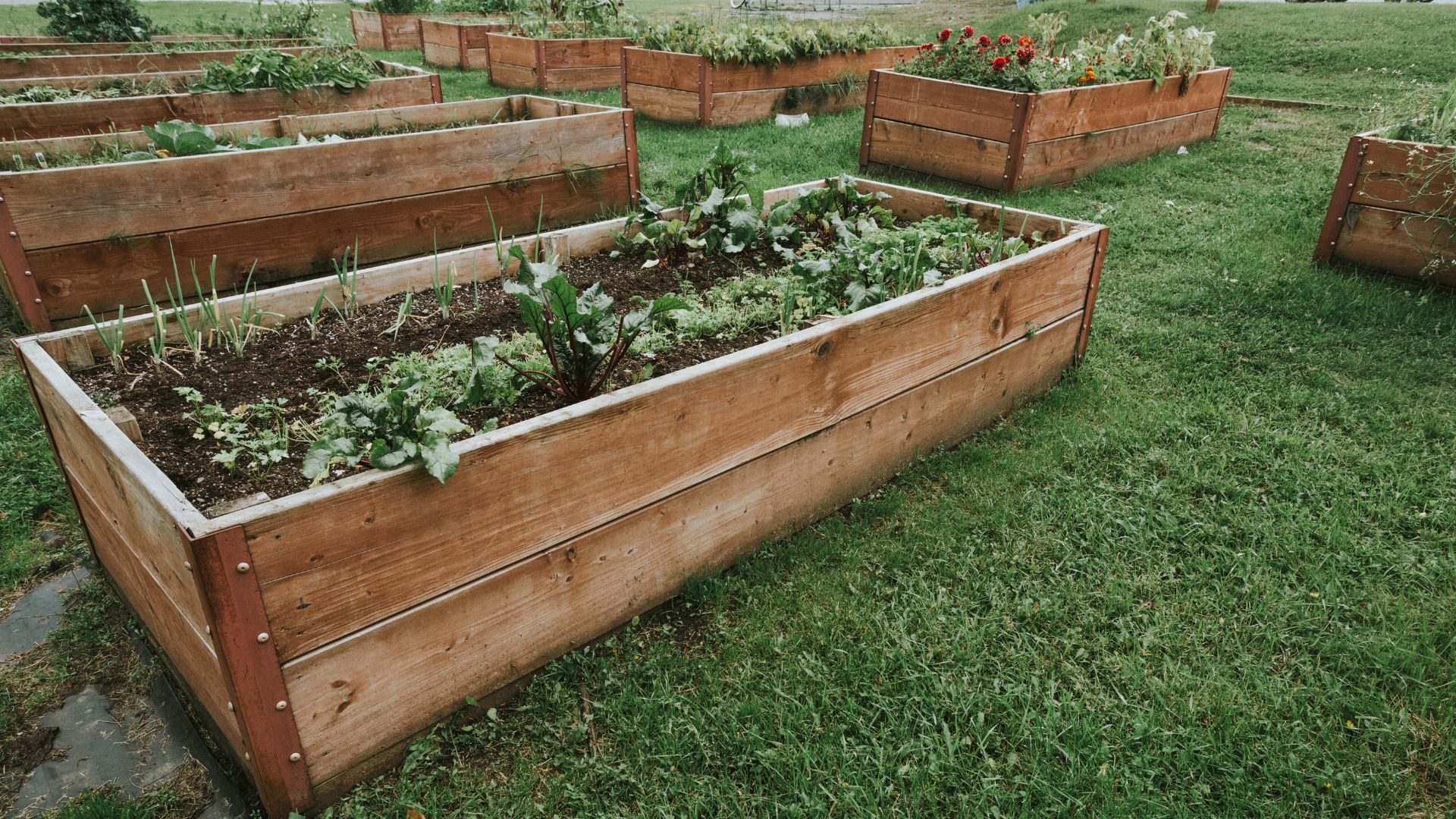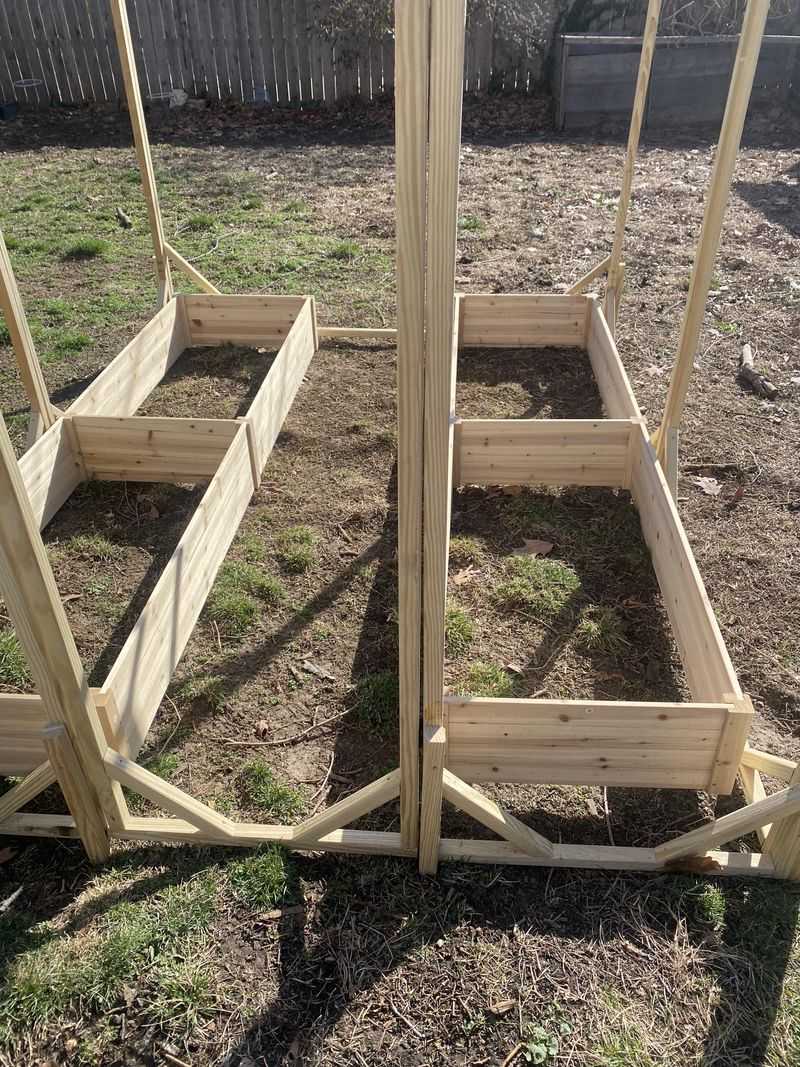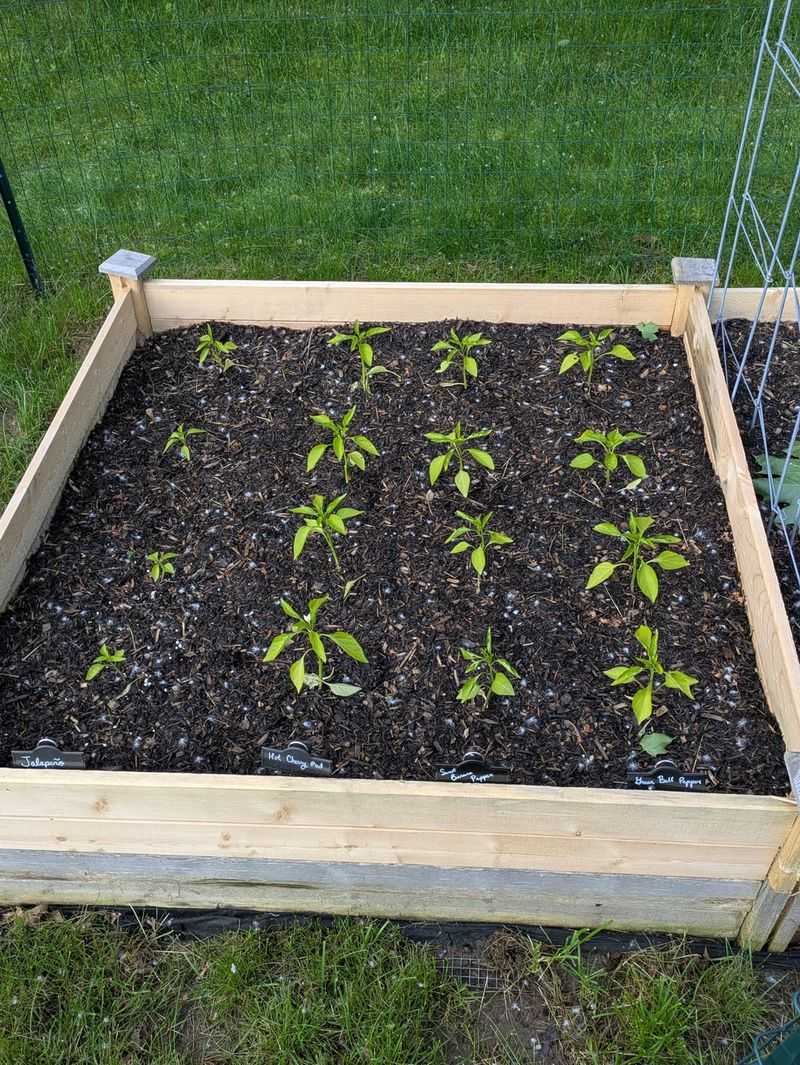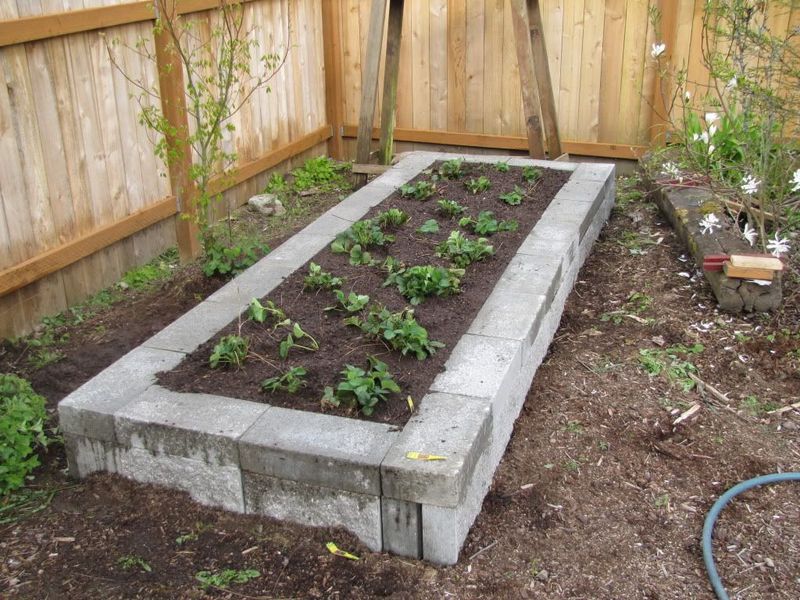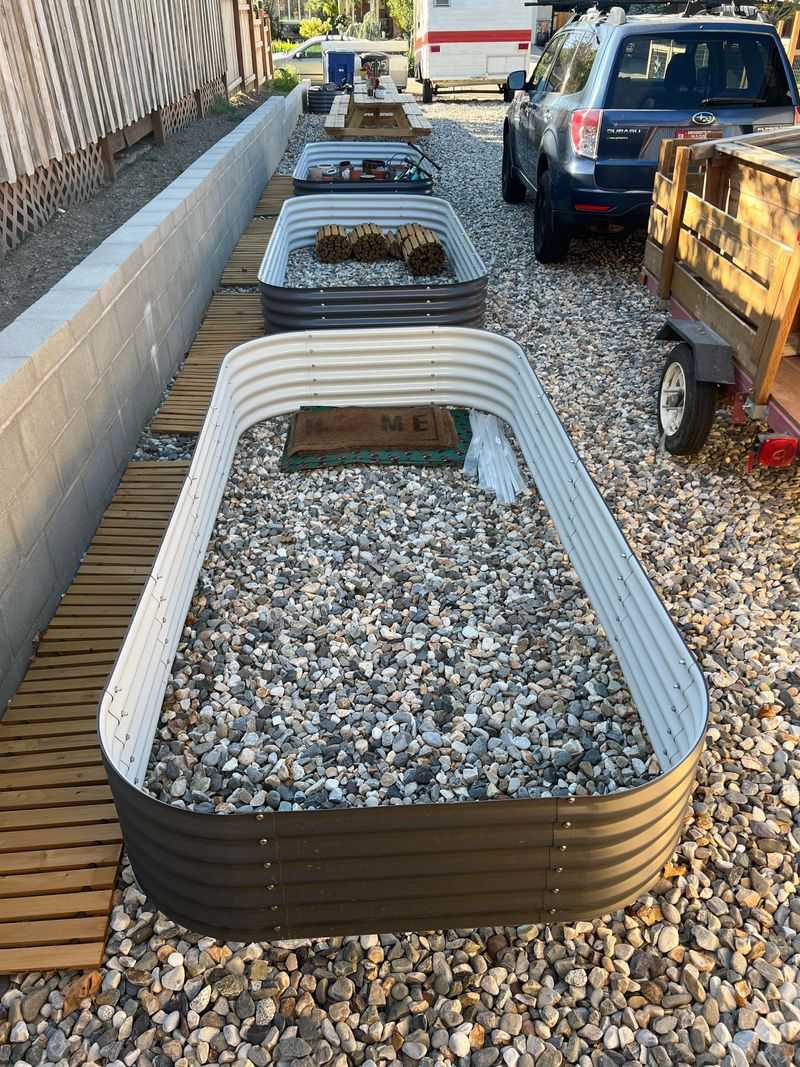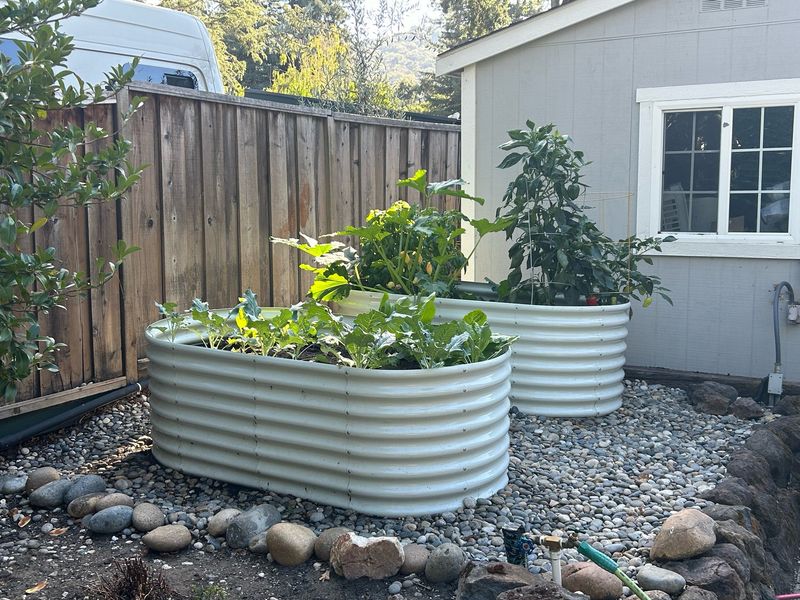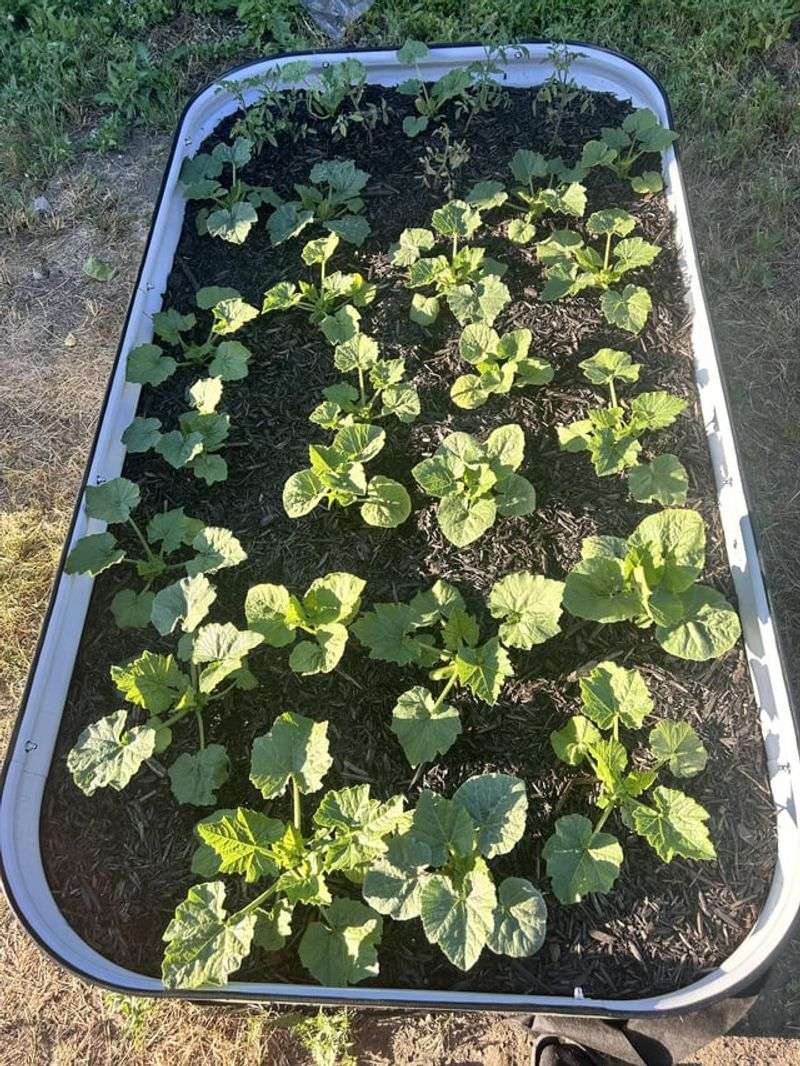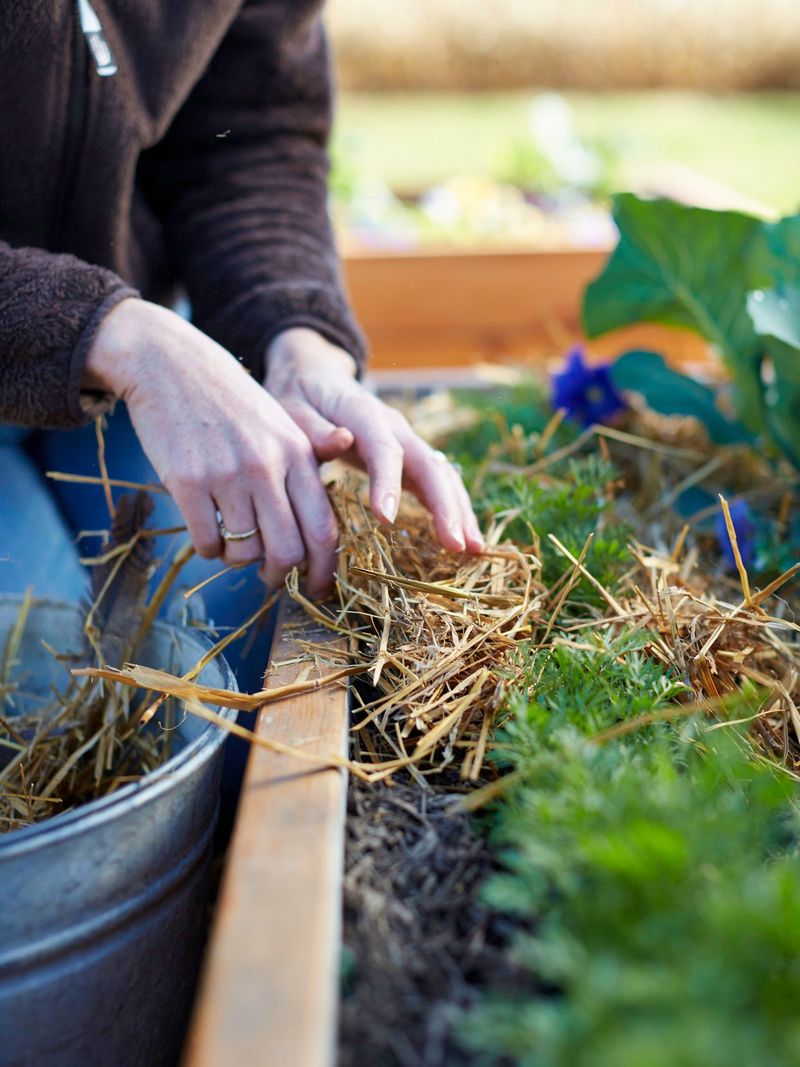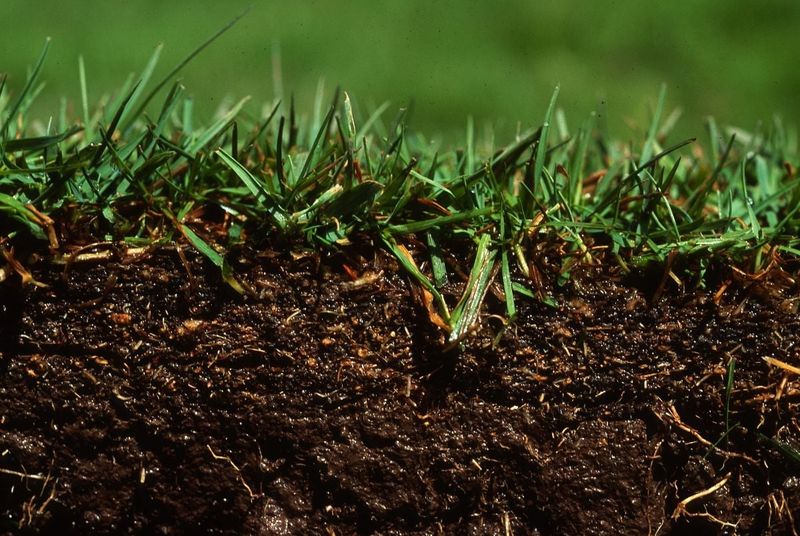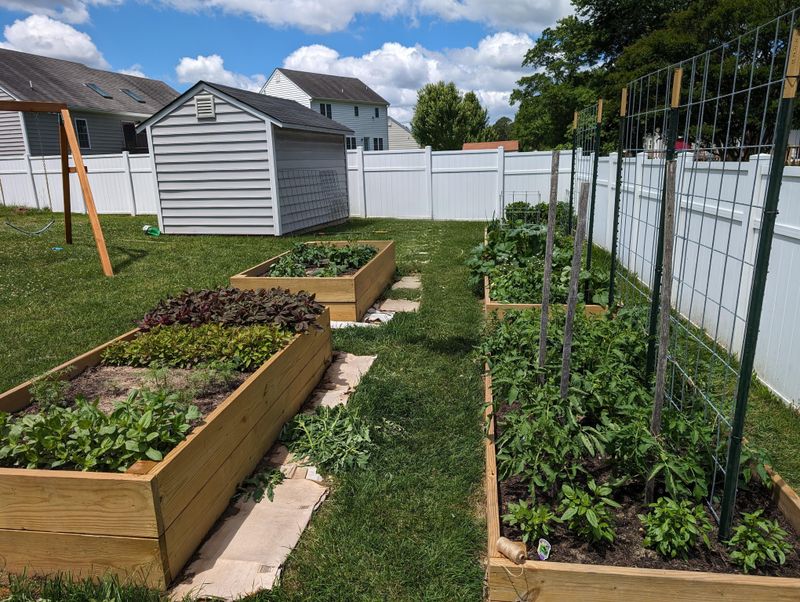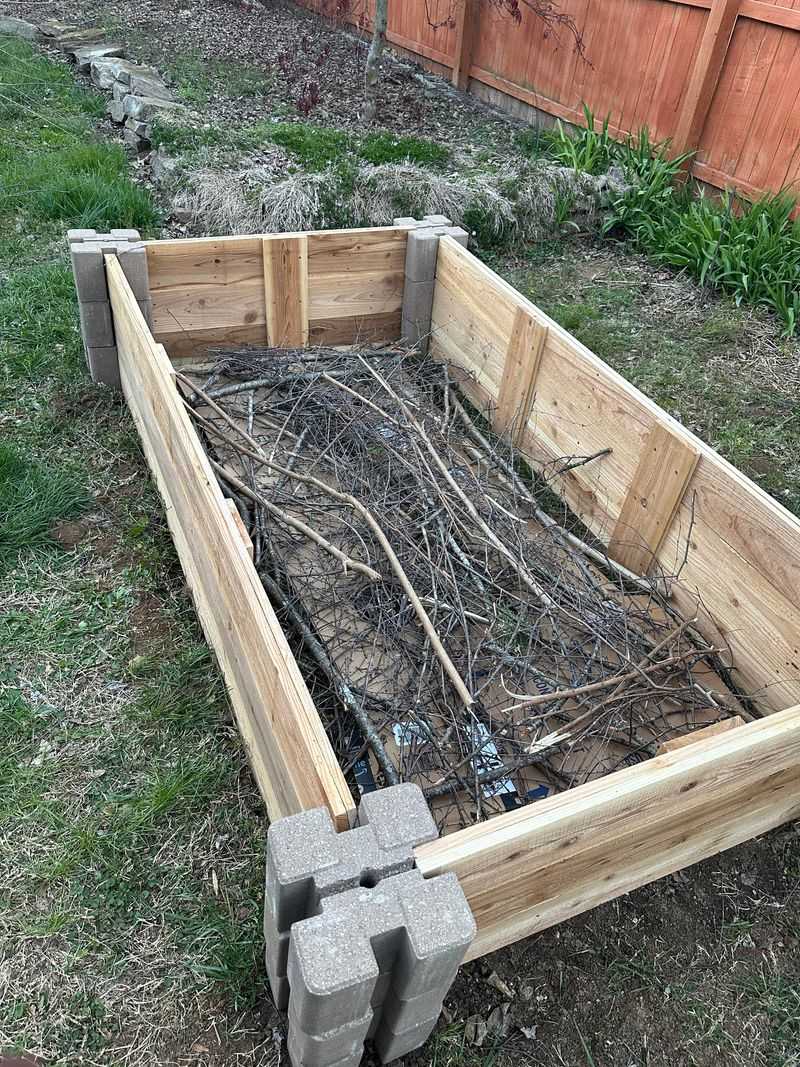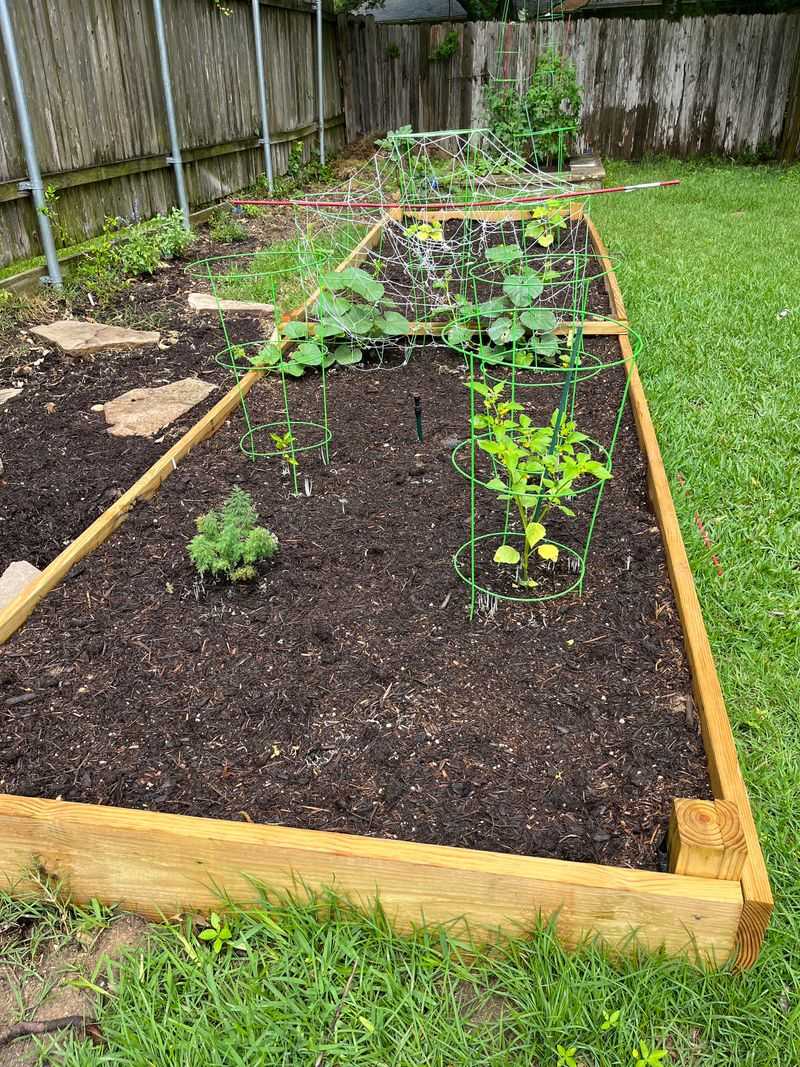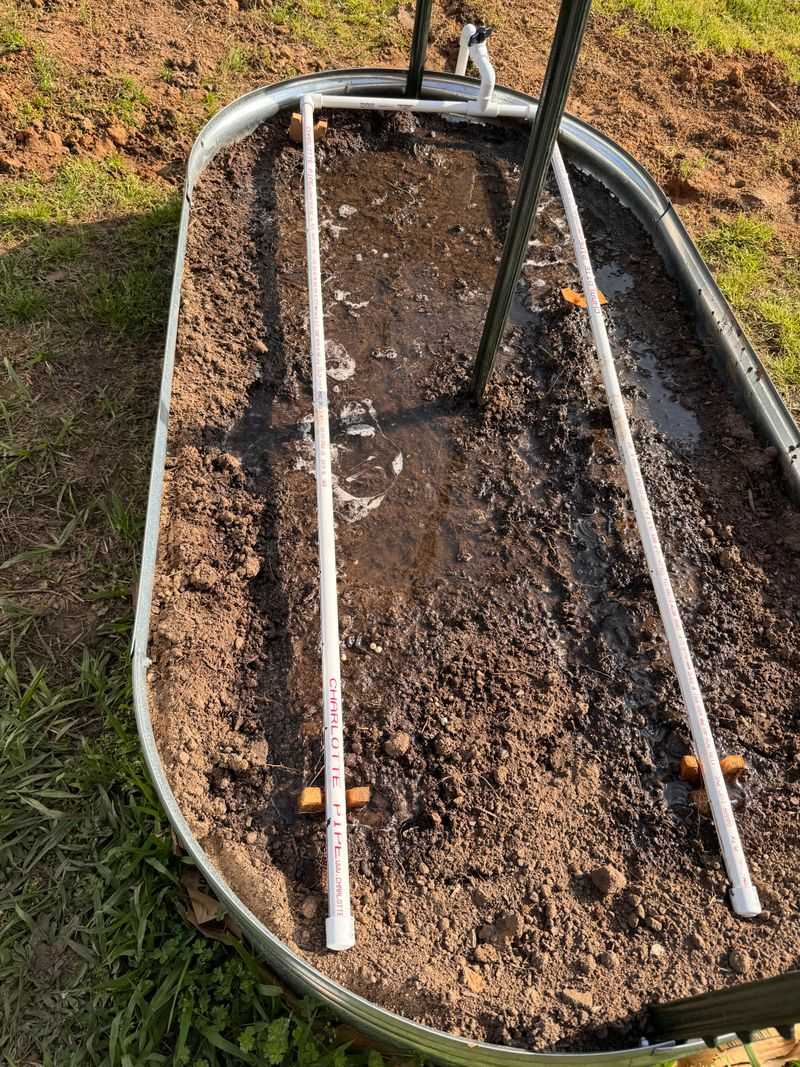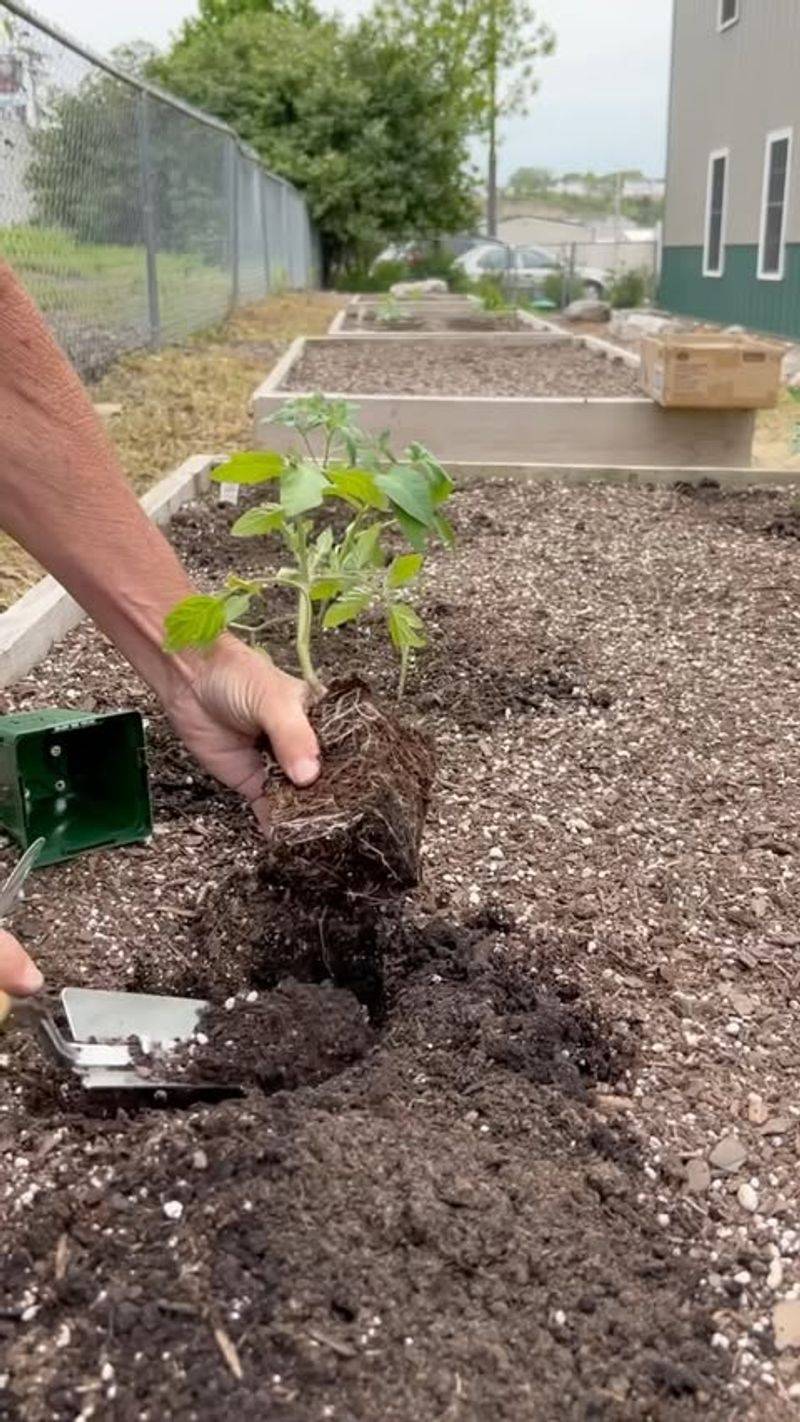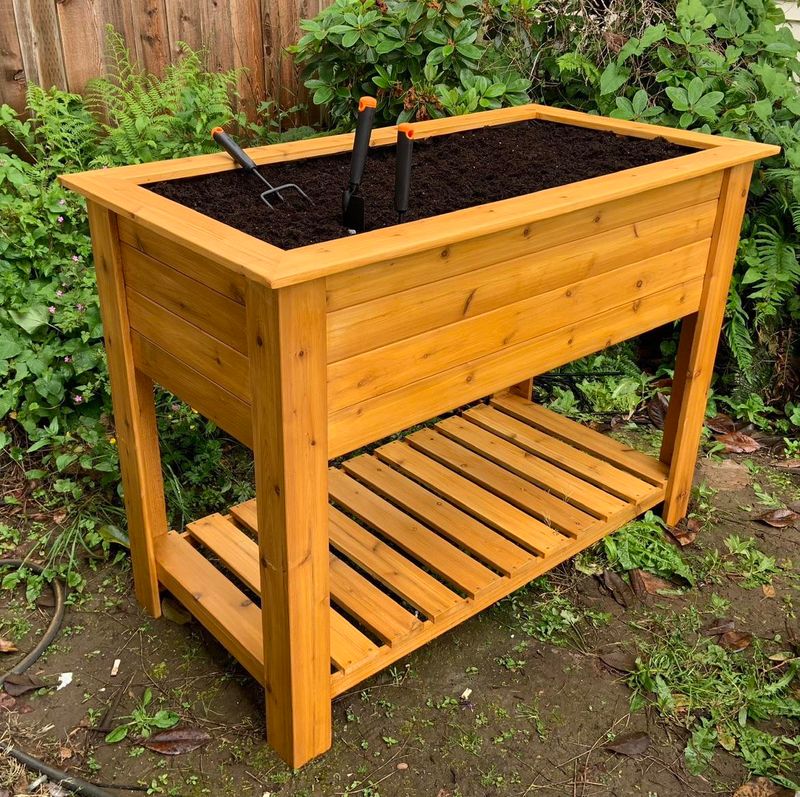Growing root vegetables in Florida’s unique climate presents special challenges, especially when it comes to drainage in raised beds. Heavy seasonal rains combined with periods of drought can wreak havoc on carrots, radishes, and sweet potatoes if your garden beds aren’t properly prepared.
Many Florida gardeners struggle with soggy soil or, conversely, beds that drain too quickly in our sandy conditions. These drainage issues often go unnoticed until harvest time reveals stunted, rotted, or malformed root crops.
Let’s explore the most common drainage problems affecting raised bed gardens across the Sunshine State and how you can fix them before your next planting season.
1. Impermeable Liner Mistakes
Using solid plastic or impermeable liners at the bottom of raised beds creates a bathtub effect during Florida’s intense rainstorms. Water gets trapped with nowhere to go, drowning root systems and promoting rot.
I learned this the hard way last summer when my turnips turned to mush after a week of afternoon thunderstorms. If you must use a liner to block weeds, choose landscape fabric that allows water passage while still preventing unwanted growth.
2. Uneven Base Construction
A tilted or uneven foundation causes water to pool in one section of your raised bed. The result? Half your radishes drown while the other half struggle with drought stress.
Before filling with soil, use a level to ensure your bed frame sits perfectly flat. For existing beds with this problem, you’ll need to empty, releveling, and refill with proper soil. The effort pays off with evenly developed root crops.
3. Hardpan Formation Below Beds
Florida’s native soil beneath raised beds can form a hardpan layer that blocks drainage. This often happens when beds are placed directly on compacted ground without preparation.
Before installing a new bed, break up the soil underneath with a garden fork to create channels for water movement. For existing beds showing drainage problems, consider drilling holes through the hardpan with a soil auger to improve water flow.
4. Overly Dense Growing Medium
Heavy clay-based potting mixes compact over time in Florida’s heat and humidity. When I switched to a lighter mix last year, my sweet potatoes finally developed properly instead of forming odd shapes around compacted soil.
Look for mixes specifically formulated for root vegetables or create your own blend with equal parts compost, coarse sand, and peat moss. This balance provides both drainage and moisture retention needed for healthy root development.
5. Insufficient Drainage Holes
Raised beds with solid bottoms need adequate drainage holes. Many gardeners underestimate how many holes are actually required in Florida’s rainy climate.
For wooden beds with plywood bottoms, drill holes every 4-6 inches in a grid pattern using a 1/2-inch bit. Metal or plastic containers need similar treatment. During our summer downpours, these holes prevent water from saturating the soil for extended periods.
6. Missing Capillary Break Layer
Skipping the gravel or crushed stone layer at the bottom of raised beds prevents proper drainage in Florida’s frequent downpours. This capillary break creates space for excess water before it moves into the surrounding ground.
Add a 2-3 inch layer of clean gravel beneath your soil mix. For existing beds showing drainage issues, you can sometimes add drainage channels by carefully inserting perforated pipes horizontally through the lower soil level.
7. Soil Level Too Low
Underfilled raised beds create a bowl effect that collects rainwater rather than shedding it. During my third growing season, I noticed this happening as my soil had settled significantly over time.
Maintain soil levels slightly crowned in the center and no more than 1-2 inches below the top edge of your bed frame. This subtle mounding encourages excess water to move toward the edges rather than pooling around your developing carrots and beets.
8. Poor Spacing Between Plants
Overcrowded root vegetables compete for drainage pathways through the soil. The resulting congestion prevents water from moving efficiently downward, especially in Florida’s already challenging conditions.
Follow spacing guidelines carefully – carrots need at least 2-3 inches between plants, while sweet potatoes require 12-18 inches. Proper spacing allows water to filter through the soil evenly rather than creating soggy pockets that lead to misshapen or rotting roots.
9. Mulch Blocking Drainage
Heavy or improperly applied mulch can prevent evaporation and block water movement in Florida’s humid environment. Thick wood chip layers often become hydrophobic, causing water to run off rather than penetrate.
Use light, organic mulches like pine needles or straw around root vegetables, keeping a small area around plant stems clear. Apply no more than 1-2 inches thick to retain moisture without creating drainage barriers. This balance is particularly important during our summer rainy season.
10. Soil Compaction From Foot Traffic
Stepping on raised bed soil while maintaining plants compacts the growing medium, eliminating air pockets essential for drainage. Once compacted, Florida’s frequent rains can’t penetrate properly.
Install stepping stones between planting areas or use wide boards laid across the bed temporarily when working. My garden productivity doubled after implementing a strict “no stepping” policy and using long-handled tools for weeding and harvesting root crops.
11. Ineffective Bed Positioning
Raised beds positioned in low-lying areas of Florida yards collect runoff from surrounding land during heavy rains. This additional water overwhelms even well-designed drainage systems.
Observe your yard during rainstorms to identify natural water flow patterns. Place new beds on slightly elevated ground or install swales to divert water around existing beds. This simple positioning strategy prevents your garden from becoming an unintentional retention pond.
12. Weed Barrier Fabric Failure
Old or low-quality weed barrier fabric deteriorates and clogs with soil particles, creating an impermeable layer that blocks drainage. This happens surprisingly quickly in Florida’s intense sun and humidity.
Choose commercial-grade, UV-resistant landscape fabric if using a barrier. Better yet, skip the fabric entirely and use cardboard that will decompose naturally. Last year, I removed all fabric from my beds and noticed immediate improvement in both drainage and earthworm activity.
13. Sidewall Water Runoff Issues
Smooth-sided raised beds made of plastic or metal can cause rainwater to sheet down the sides without penetrating the soil edge areas. Plants growing near these edges often suffer from inconsistent moisture.
Create small soil berms around the inner perimeter of your bed to catch and direct water inward. Alternatively, install drip irrigation specifically targeting the edge zones. These adjustments ensure even moisture distribution throughout the growing area.
14. Irrigation System Overwatering
Automated irrigation systems not adjusted for Florida’s rainfall patterns often add water to already saturated soil. This constant moisture prevents the dry cycles root vegetables need for proper development.
Install a simple rain sensor to automatically skip scheduled watering after significant rainfall. Check soil moisture manually before running systems during rainy season. My carrots developed much better flavor once I reduced watering frequency during our humid summer months.
15. Neglected Soil Amendments
Florida’s sandy native soil needs organic matter to balance drainage and water retention. Many raised beds fail because gardeners don’t replenish these amendments regularly.
Add compost to your beds at least twice yearly to maintain optimal soil structure. Organic matter acts like a sponge, holding moisture while still allowing excess water to drain. Without this regular maintenance, even the best-designed beds will eventually develop drainage problems.
16. Climate-Inappropriate Bed Height
Raised beds that are too shallow (under 8 inches) don’t provide enough soil volume for proper drainage in Florida’s intense rain events. Conversely, beds that are excessively tall dry out too quickly during drought periods.
The ideal bed depth for Florida root vegetables is 12-18 inches. This provides sufficient drainage capacity while retaining enough moisture to sustain plants between rains. When rebuilding my garden last spring, this mid-range height made all the difference in root quality.

